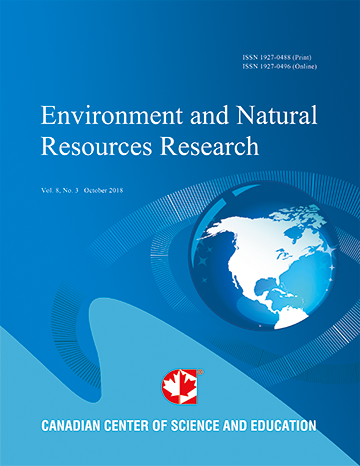Effectiveness of Raw versus Activated Coconut Shells for Removing Arsenic and Mercury from Water
- Ismaila Emahi
- Patrick O. Sakyi
- Pennante Bruce-Vanderpuije
- Abdul Rasheed Issifu
Abstract
Relatively inexpensive biosorbents, made from coconut shell, were explored as alternatives to high-quality activated carbon for use in small-scale, wastewater treatment in developing economies. Simple charring and activation procedures were followed to produce CaCl2-activated coconut shell charcoal and its effectiveness was compared with raw coconut shell powder for removal of mercury (Hg) and arsenic (As) from contaminated water. From atomic absorption spectroscopy analyses, the removal efficiency of As and Hg with the use of activated charcoal were 67% (vs 65% for the raw form), and 53% (vs 49% for the raw form), respectively, from their corresponding “artificially”-contaminated wastewater. These results suggest that despite the slightly improved removal efficiencies recorded for activated coconut shells, the raw version could equally be used in treating wastewater towards the removal of the toxic metals- As and Hg. In order to understand the chemistry of the adsorption processes, FT-IR spectroscopy was employed to study similarities and differences in chemical compositions of the raw versus activated coconut shells before and after the biofiltration processes. To further investigate the effect of this biofiltration process on the overall quality of water, the physicochemical parameters (pH, conductivity, colour, turbidity, TDS and TSS) were measured on river water samples, pre-treated with the biosorbents. For both the raw and activated coconut shell, there was general improvement, although the conductivity of the water treated with the activated version was slightly elevated, was likely due to leaching of CaCl2 that was used for activation.
- Full Text:
 PDF
PDF
- DOI:10.5539/enrr.v9n3p127
Journal Metrics
Google-based Impact Factor (2016): 6.22
h-index (November 2017): 12
i10-index (November 2017): 19
h5-index (November 2017): 11
h5-median (November 2017): 12
Index
Contact
- Emily LinEditorial Assistant
- enrr@ccsenet.org
